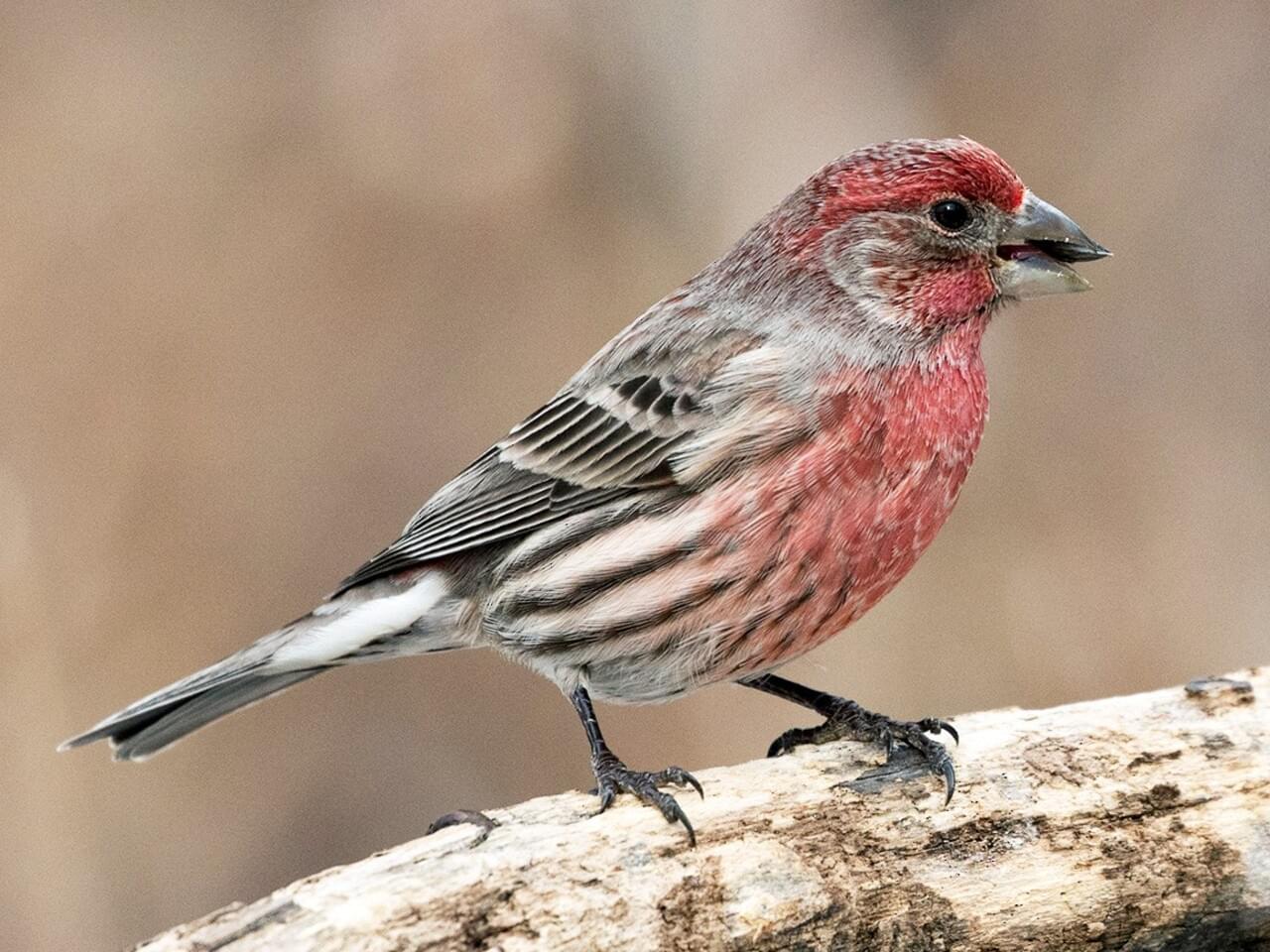Table Of Content
- New head of L.A. DWP will make $750,000 a year — nearly twice as much as her predecessor
- Feeding Behavior
- Israeli officials concerned about possible ICC arrest …
- LAPD had no security at mayor’s house when intruder broke in; suspect targeted Bass, D.A. says
- Nesting Facts
- Food
- House Finches: Colors, Types, Migration & More
Purple Finches aren’t purple, and House Finches don’t stick to houses. But that’s only the start of the confusion around these two doppelgangers. A red and brown bird at your feeder might be either one throughout much of the United States. House Finches are common and widespread across most of North America, including Hawaii.
New head of L.A. DWP will make $750,000 a year — nearly twice as much as her predecessor
House Finches have bright red-orange to red plumage on their head with brown feathers on their wings and sometimes face. Purple Finches have a dark pink or reddish hue that goes down towards their white bellies. House Finches, particularly males, can look very different from one to another. This is largely due to differences in their diet rather than regional differences.
Feeding Behavior

Female House Finches select a mate based on his song, bright red feathers, ability to forage for food, and courtship display (aka the butterfly flight). If you hear a House Finch mating call, keep an eye out for their butterfly flight! They fly up to 30 meters in the air as they furiously sing their warbling mating call. Male House Finches sing a long, jumbled warbling composed of short notes. The song often ends with an upward or downward slur, and lasts about 3 seconds. Females sometimes give a shorter, simpler version of the song.
Marjorie Taylor Greene says house was targeted in swatting call - The Washington Post
Marjorie Taylor Greene says house was targeted in swatting call.
Posted: Tue, 26 Dec 2023 08:00:00 GMT [source]
Israeli officials concerned about possible ICC arrest …
The male bird forages for fruits and nuts and then regurgitates its food to its young flock. But regurgitating food is a fast way to deliver nutrients to very young birds. The House Finches in mild weather locations in the south or western United States typically stick around for the winter months. The female House Finch is a little more tricky to identify, as they look more like a house sparrow with a few key differences. Once Audubon got involved, a whole secret ring of House Finch shipments from California to pet stores on the East Coast was discovered. Undercover Audubon operatives arranged fake transactions of birds—$35 for a lot of 100—to catch criminals in the act.
LAPD had no security at mayor’s house when intruder broke in; suspect targeted Bass, D.A. says

Adult males are rosy red around the face and upper breast, with a streaks down the belly and on the flanks. Females/immature males are brown overall with blurry streaks down the belly. Outside of the breeding season, female House Finches don’t make that much noise. They will make the occasional chirp to tweet to communicate with fellow Finches, but vocalizations are rare outside of breed season. Both males and females give distinctive, liquid calls with two or three syllables. The male makes a loud call as he returns from foraging to perch near the nest tree, and the female responds to the call of her mate, ignoring the calls of other males.
Bird Identification Class This Wednesday, in Preparation for the Christmas Bird Count - Pagosa Daily Post
Bird Identification Class This Wednesday, in Preparation for the Christmas Bird Count.
Posted: Mon, 07 Dec 2020 08:00:00 GMT [source]
Within 20 years of their release in New York City, House Finches were already in Boston and Philadelphia; 20 years after that, they were breeding from Maine to Georgia. Today they’re one of our most widespread birds, and are found throughout the lower 48 states and Hawaii. House Finches are native to open and desert habitats, but have expanded their range, naturally and through introductions, and now can be found in almost any kind of human-altered habitat. They prefer edge habitat and are absent from dense coniferous forests. Females/immature males are brown overall with blurry streaking on the back and belly.
Food
Meanwhile, Purple Finches nest in Canada, along the Pacific, and in the Northeast. In winter they migrate as far south as Florida, but they don't typically visit the Interior West at any time of year. To see each bird's range, visit our online field guide, or download our free Audubon bird guide app. Adults have a long, square-tipped brown tail and are a brown or dull-brown color across the back with some shading into deep gray on the wing feathers. Breast and belly feathers may be streaked; the flanks usually are.
Building owners also may be struggling with rising interest rates, real estate experts said. Housing remains prohibitively expensive in Los Angeles, hampering city efforts to acquire units. HACLA Chief Executive Douglas Guthrie said that the authority is close to purchasing buildings using LA4LA financing and anticipates closing on new apartment units by early fall. LA4LA is modeled after a similar program in Atlanta that has raised $150 million from philanthropic groups, corporations and individuals. The program provides loans and grants to developers of mixed-income housing that includes affordable units. The city has had to return some voucher money to the federal government, frustrating officials.
Their songs often include obvious and quite skilled imitations of other bird species. Males sing to attract females in the spring, but they don’t seem to defend territories through song. The House Finch is a recent introduction from western into eastern North America (and Hawaii), but it has received a warmer reception than other arrivals like the European Starling and House Sparrow. That’s partly due to the cheerful red head and breast of males, and to the bird’s long, twittering song, which can now be heard in most of the neighborhoods of the continent.
Females/immature males are brown overall with heavily streaked underparts. Contact calls are a way for finches to communicate with each other. If a Purple Finch or a House Finch finds an excellent feeding source, they emit a soft chirp or cheep noise to contact nearby finches.
There is considerable color variation among males, from pale yellow, to orange with bright red, this being the most common. Many but not all males reach mature plumage in their first year. Flocks of House Finches are common at bird feeders during the non-breeding season. Some flocks may stay together through the breeding season as well, and birds will use bird feeders year round. They often forage on the ground, but also perch on weeds, shrubs, or trees. Both males and females may sing during the breeding season, and males sing year round.

No comments:
Post a Comment